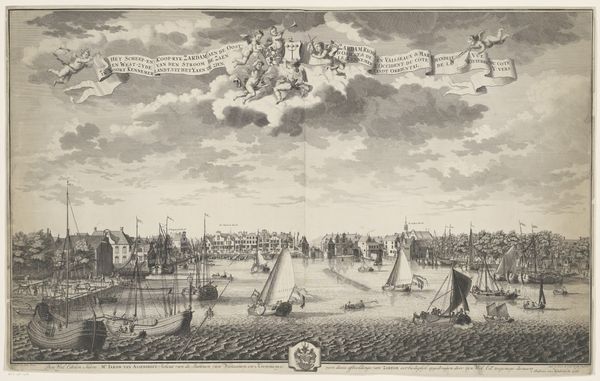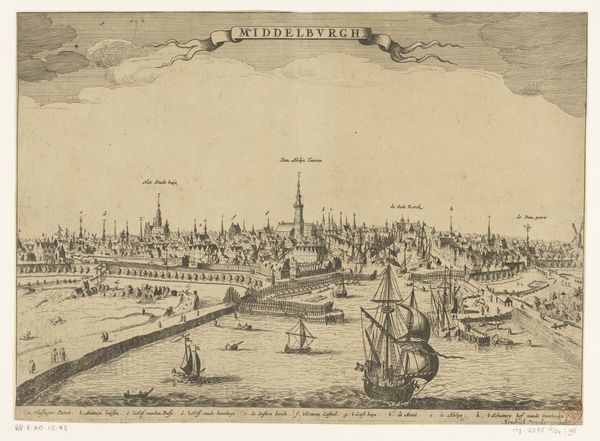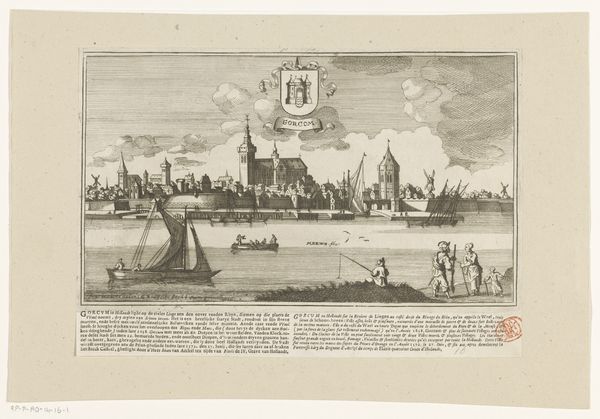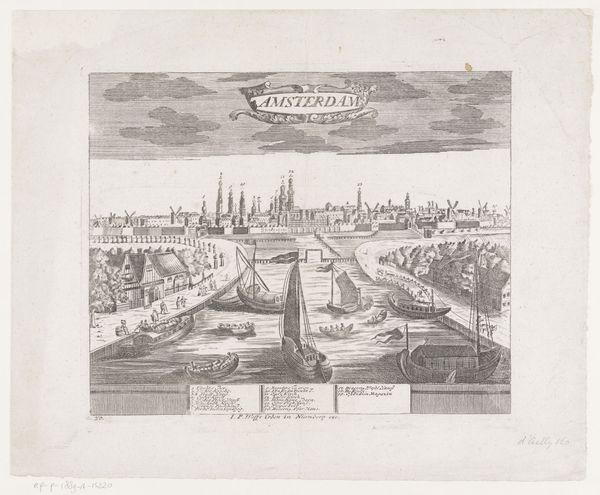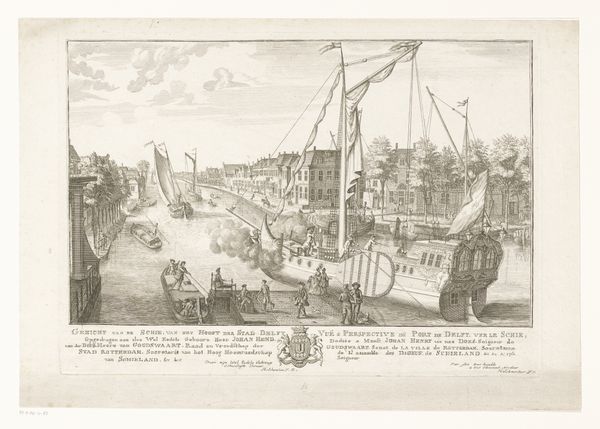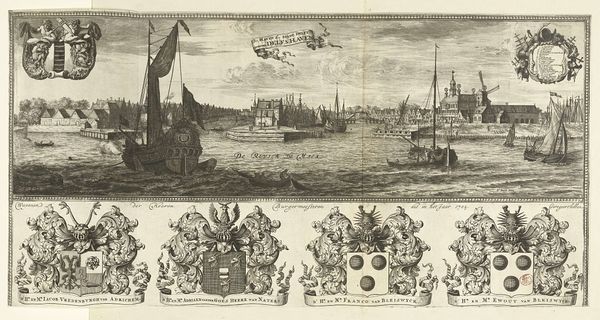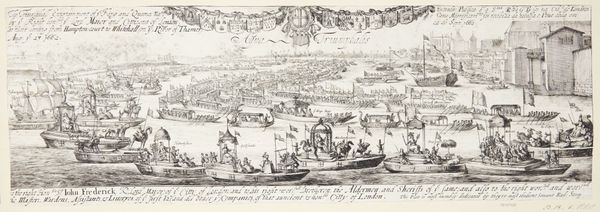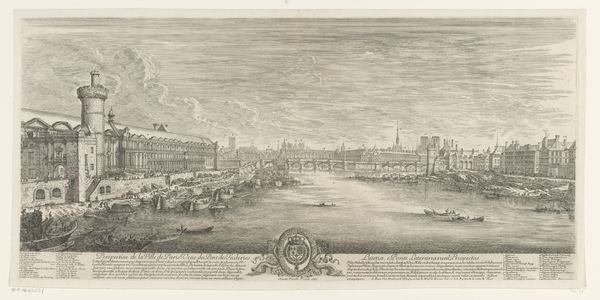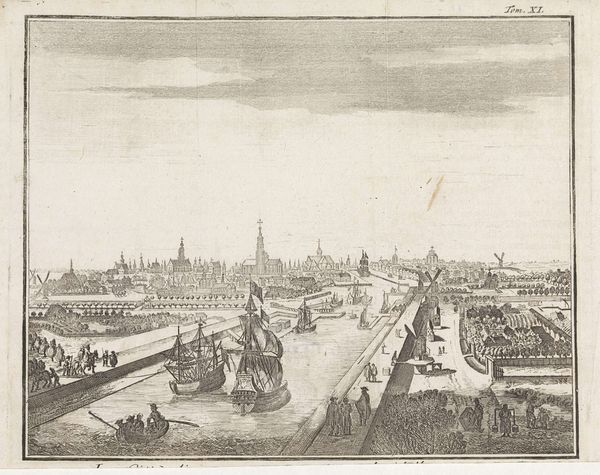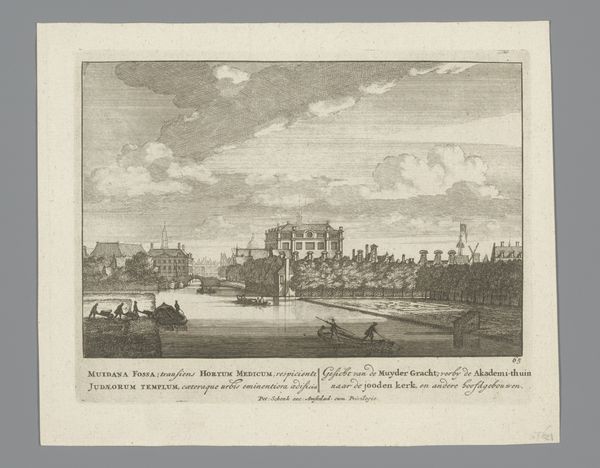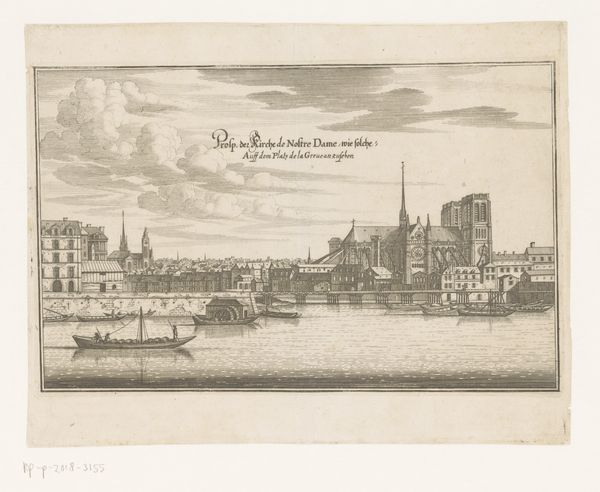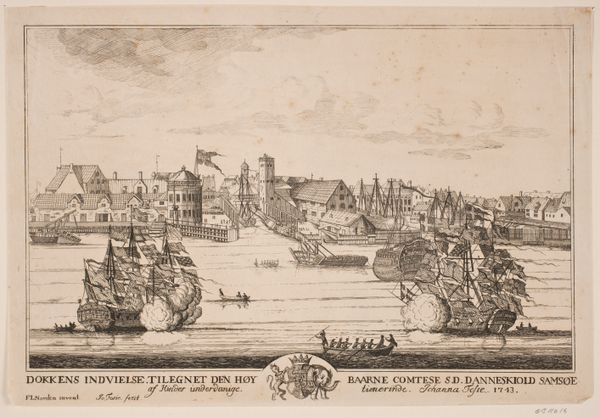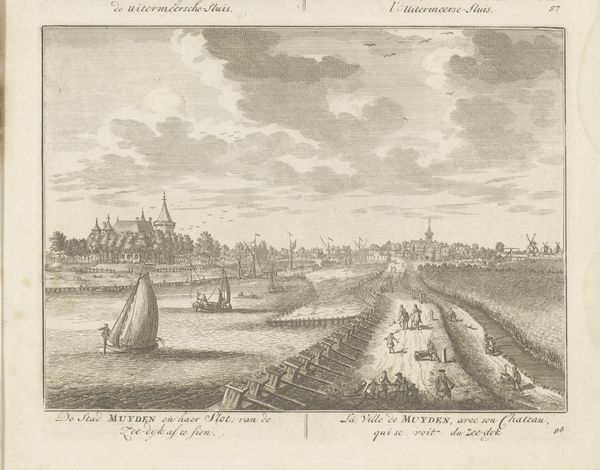
print, engraving
#
baroque
# print
#
old engraving style
#
landscape
#
cityscape
#
engraving
Dimensions: height 200 mm, width 297 mm
Copyright: Rijks Museum: Open Domain
Curator: Ah, the industrious serenity of Amsterdam! This engraving, simply titled "Gezicht op Amsterdam, gezien vanaf de Amstel," or "View of Amsterdam from the Amstel," was likely created between 1683 and 1700. It’s a cityscape, likely anonymous, now held in the collection of the Rijksmuseum. What's your first impression? Editor: The whole piece hums with detail, doesn’t it? It's so crisp, like a well-ordered dream of a bustling port. Everything is incredibly balanced: light and dark, land and water…Even the text at the bottom acts as a foundation. And those chubby little angels with their banners, such a Baroque touch! Curator: Precisely. The angels, cherubic messengers, aren't merely decorative; they’re vehicles of symbolic communication. These billowing banners display Latin text that celebrates the civic virtues and prosperity of Amsterdam. Editor: I see it. Like advertisements dropped from the heavens! But tell me, beyond the surface, does it convey a particular feeling? Curator: I sense civic pride interwoven with mercantile ambition. Amsterdam, in the late 17th century, was at its Golden Age zenith. The composition celebrates the city's role as a vibrant center of trade and enlightenment. The architecture itself embodies this confidence, as those gothic towers project themselves proudly skyward. The artist shows the city both as it appears to the eye, as well as its conceptual framework as the 'ideal' city. Editor: "Civic pride," I like that. Though I wonder if that level of detail suggests something else entirely; like the artist and those in the market for a print might be saying, 'Look what we've made, let us now never forget it!' Curator: An apt point! Printed images served not only an aesthetic purpose, but became a vital instrument for memorializing identity at various levels; personal, political, cultural. In that vein, I agree it subtly nods towards something beyond mercantile pride, perhaps gesturing towards future generations in awe of past achievements. Editor: It's definitely given me a new appreciation for cityscapes; perhaps their continued popularity throughout history means people need not simply depictions, but a kind of map, a record of the values held, reflected in our choices. Curator: A fittingly insightful perspective. It seems that even in its calculated visual rhetoric, this seemingly straightforward view onto Amsterdam hints at multiple layers of meaning.
Comments
No comments
Be the first to comment and join the conversation on the ultimate creative platform.
